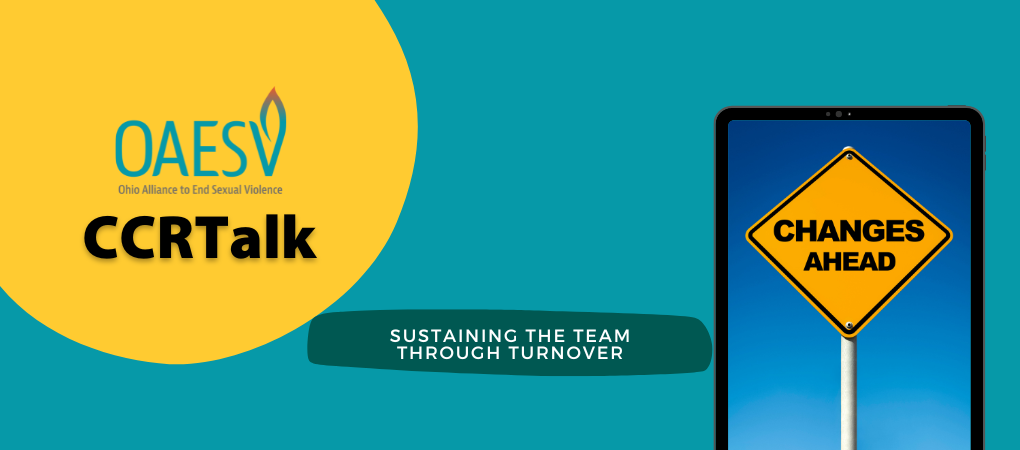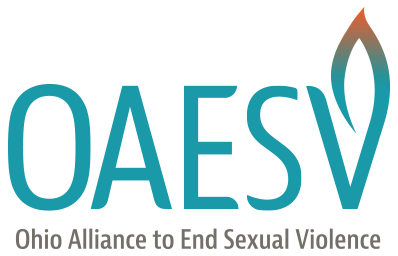
Sustaining the Team Through Turnover
During our Southeast Ohio Coordinated Community Response Team Summit, many amazing praises were shared about teams — but also mentioned were some barriers. One barrier that came up in conversation, and has come up frequently in other spaces, is that in our teams and partnerships, there are often “champions” who sustain many of the key relationships, engage team members, and keep momentum going. When the champion of your partnership transitions — for another job, retirement, burnout, or any other reason — team work is halted, and everyone finds themselves back at square one.
While, certainly, we want people to stay in this work and on our teams, transition is inevitable (even if we work diligently to mitigate burnout and turnover). However, there are steps we can take to ensure that even when champions and teammates leave, the brakes aren’t pressed on our work.
First of all, we need to examine the structure of teams. Does your team have one main point person? This is incredibly common, but isn’t always sustainable. People will not be available at any given time for leaves, illnesses, job transitions, or even simply taking a well-deserved day off. Consider shared leadership for your team and establishing, from the get-go, multiple contacts from each stakeholder. You can even add structures in your team’s protocol to identify ways to share leadership and engage multiple contacts.
Second, we can create some structures within our organizations to increase team sustainability. OAESV’s Vice President of Operations, Shandra Ingram, instituted active succession planning for OAESV. Annually, staff document main contacts, roles and responsibilities, meetings, and other important information in an easily accessible staff folder. This means that if any needs come up while staff are out, or if staff have to leave for any reason, the work can continue seamlessly.
Additionally, organizations may want to consider what transition periods look like and put policies, procedures, and supports into place. For instance, if a staff member is going on maternity leave or has given a letter of resignation, the organization may want to have policies and procedures on what tasks should be completed before the staff member leaves, to whom duties will be transferred, and how to complete warm handoffs to next staff. Additionally, supervisors can help the staff member evaluate current workload and reassign certain tasks so that the staff member has plenty of time and attention to devote to completing transition tasks.
Organizations can also ensure that new staff have a standardized and comprehensive onboarding and orientation so that they can take over the previous staff’s role smoothly. Putting this in your P&Ps (policies and procedures) can help. You may even want to develop an orientation process for your SART or CCRT!
Lastly, individuals can ensure a smooth transition and continued work. It’s always a good idea for leaving staff to draft communication to all community partners and teams beforehand. Communication can be as easy as a mass email and should include:
- End date
- Staff taking on roles and responsibilities, and if that staff is interim or permanent
- Contact information or warm handoff for staff taking on role (e.g., “I’ve copied them on this email so you can connect directly” or “I’d love to schedule a meeting with you before my last day so I can say goodbye and introduce you to _____ who will be taking on my roles.”)
- Optional: contact information for a supervisor, teammate, or business line should they have any trouble connecting with new staff
The more information you can give or connections you can create before you go, the better! Consider sharing when new staff will be taking on your duties, what their preferred methods of contact are, and what they can expect in your absence (e.g., “______ is amazing and has ample experience. I anticipate wonderful continued work!” or “Currently, my position is still open. _______ will be taking on some of my duties in the interim. They will be attending team meetings and are a great point of contact for our partnership, but may not have much capacity for workgroup tasks. Once new staff is hired, we’ll have about a month of onboarding and then our partnership should return to normal capacity.”)
In what ways does your team foster sustainability? Comment below!
